
Track plan at a glance Name: Federal Street Scale: HO (1:87 with Proto:87 fine scale standards) Size: 2′-0″ x 11′-6″ Theme: industrial branch line Era: mid-1950s Style: shelf Originally appeared in the May 2003 issue of Model Railroader. Also appeared in 102 Realistic Track Plans. Click on the link to download a PDF of this […]
Read More…
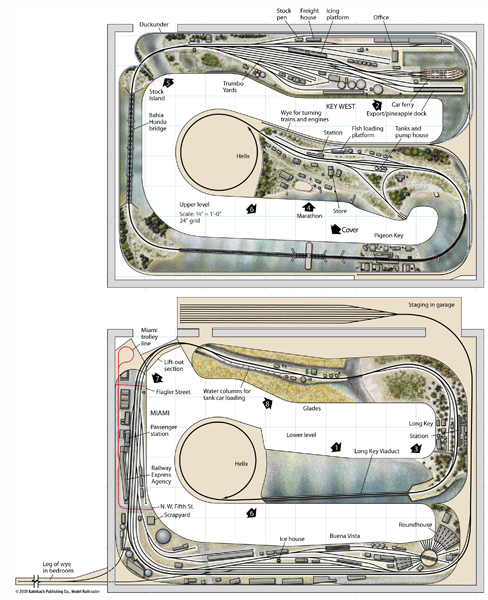
Track plan at a glanceName: Florida East Coast Ry. Key West ExtensionScale: HO (1:87)Size: 16 x 24 feet with a 2 x 11-foot staging areaPrototype: Florida East CoastPeriod: January 31, 1930Style: walkaround, point-to-pointMainline run: 510 feetMinimum radius: 30″Minimum turnout: no. 6Maximum grade: 2 percentOriginally appeared in the February 2001 issue of Model Railroader. Also appeared […]
Read More…
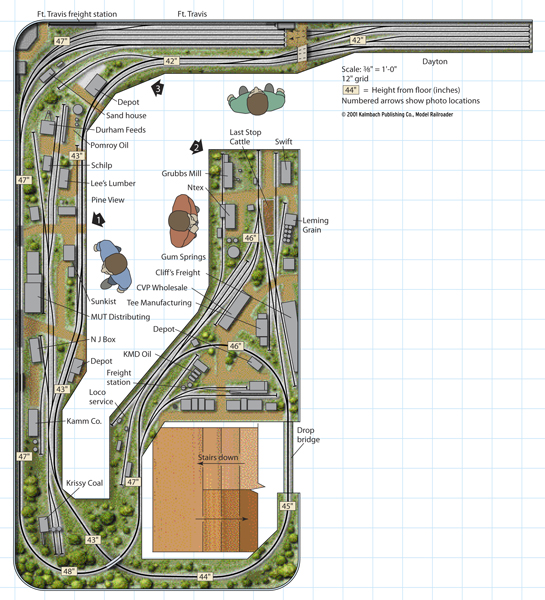
Track plan at a glance Name: Fort Travis & Dayton Scale: HO (1:87) Size: 9½ x 19 feet Theme: industrial switching Period: mid-’50s Style: walk-in Mainline run: 58 feet Minimum radius: 24″ Minimum turnout: no. 6 Maximum grade: 2.1 percent (¼” per foot) Originally appeared in the November 2001 issue of Model Railroader. Click on […]
Read More…
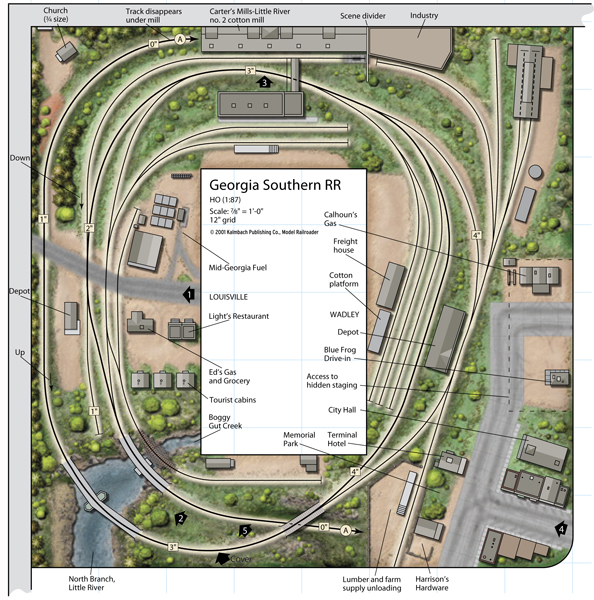
Track plan at a glanceName: Georgia Southern RRScale: HO (1:87)Size: 8 x 8 feet with center operating areaTheme: free-lance, fictitious subsidiary of the Georgia RR with branch linePeriod: summer 1957Style: two-lap oval with three-track staging yardMainline run: 32 feetMinimum radius: 24″ main line, 20″ through curved turnouts, 18″ on sidingsMinimum turnout: no. 5Maximum grade: 4 […]
Read More…
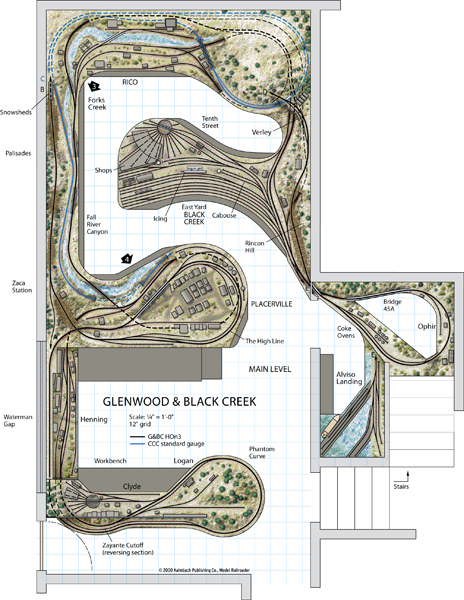
Track plan at a glance Name: Glenwood & Black Creek Scale: HOn3 (1:87) Size: 16′-6″ x 33′-0″ Theme: western narrow gauge Period: 1880 to 1930 Style: double deck Mainline run: 240 feet Minimum radius: 24″ Minimum turnout: no. 6 Maximum grade: 2 percent main, 3 percent branch Originally appeared in the May 2000 issue of […]
Read More…
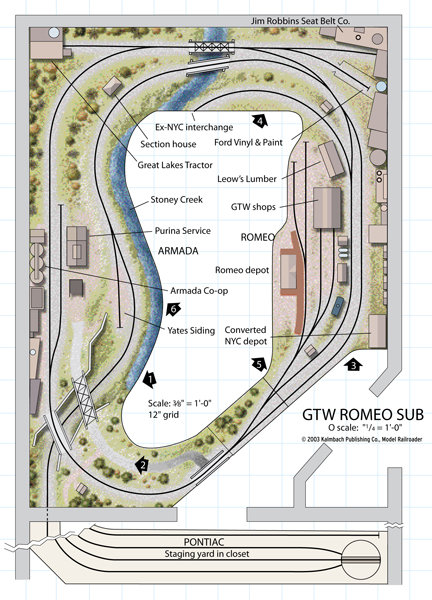
Track plan at a glance Name: GTW Romeo Sub Scale: O Size: 11 x 15 feet Minimum radius: 36″ (main), 24″ (staging) Minimum turnout: no. 5 Maximum grade: 2 percent Originally appeared in the October 2003 issue of Model Railroader. Also appeared in 102 Realistic Track Plans. Click on the link to download a PDF […]
Read More…

Track plan at a glance Name: Hillside Scale: HO Originally appeared in the September 2000 issue of Model Railroader. Click on the link to download a PDF of this track plan […]
Read More…
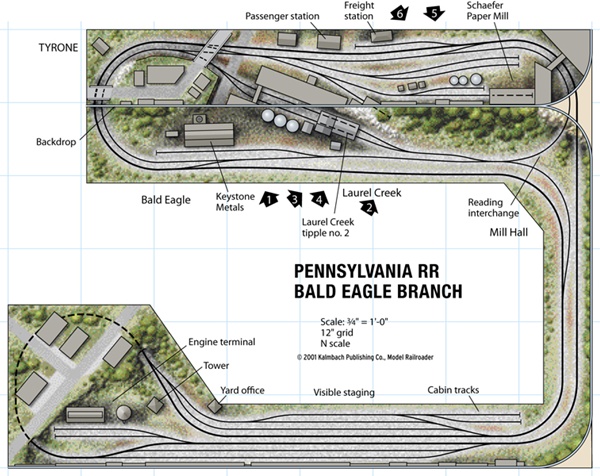
Name: Bald Eagle Branch Scale: N (1:160) Size: 6 x 8 feet Prototype: Pennsylvania RR branch line Period: summer 1956 Style: tabletop cookie cutter Mainline run: 28 feet Minimum radius: visible 18; hidden 9″ Minimum turnout: main line no. 6; sidings no. 4 Maximum grade: main line 2 percent; sidings 6 percent Originally appeared in […]
Read More…
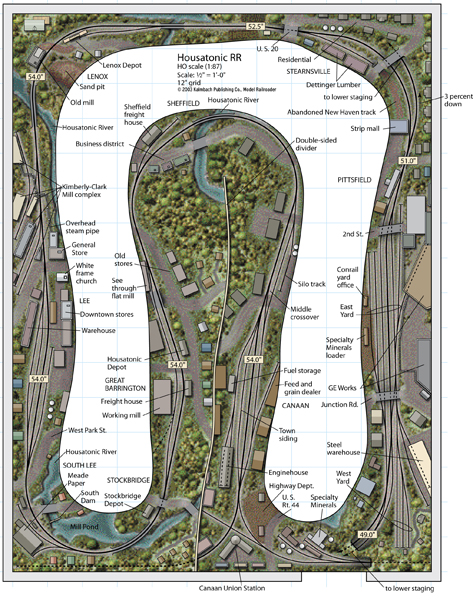
Track plan at a glance Name: Housatonic RR Scale: HO (1:87) Originally appeared in the May 2003 issue of Model Railroader. Click on the link to download a PDF of this track plan […]
Read More…
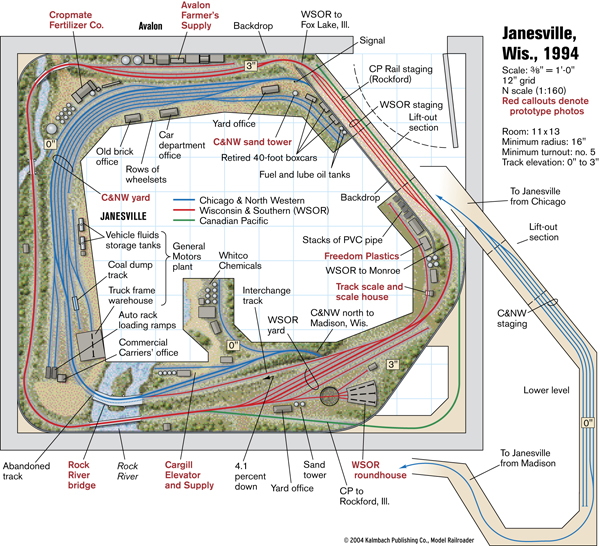
Track plan at a glance Name: Janesville, Wis., 1994 Scale: N (1:160) Size: 11 x 13 Minimum radius: 16″ Minimum turnout: no. 5 Originally appeared in the October 2004 issue of Model Railroader. Click on the link to download a PDF of this track plan […]
Read More…
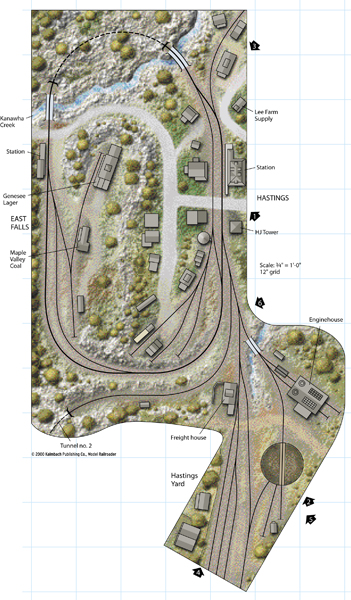
Track plan at a glance Name: Kanawha Creek Ry. Scale: HO (1:87) Size: 7 x 13 feet Theme: short line Period: early 1950s Style: island Mainline run: 21 feet Minimum radius: 18″ Minimum turnout: no. 4 Maximum grade: 2.5 percent Originally appeared in the November 2000 issue of Model Railroader. Also appeared in 102 Realistic […]
Read More…
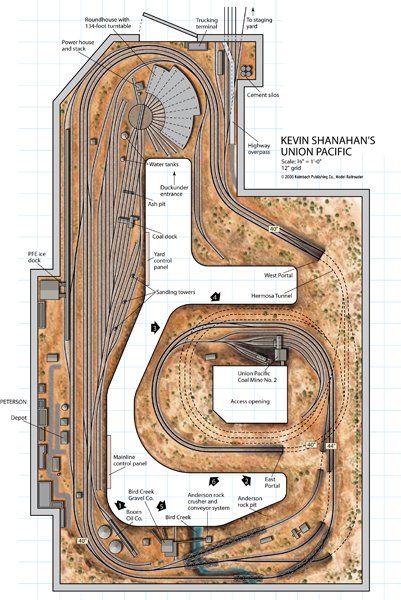
Track plan at a glance Name: Union Pacific Scale: HO Size: 16 x 26 feet Prototype: UP main line Period: 1955-1965 Style: around the walls with duckunder entrance Mainline run: 220 feet Minimum radius: 38″ Minimum turnout: no. 6 Maximum grade: 2.5 percent Originally appeared in the July 2000 issue of Model Railroader. Click on […]
Read More…












